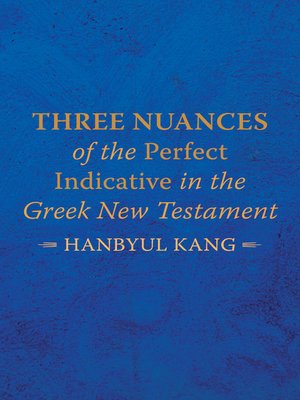
Sign up to save your library
With an OverDrive account, you can save your favorite libraries for at-a-glance information about availability. Find out more about OverDrive accounts.
Find this title in Libby, the library reading app by OverDrive.



Search for a digital library with this title
Title found at these libraries:
| Loading... |
This book analyzes the existence of the three nuances of the perfect tense occurring in the Greek New Testament: resultative-stative, anterior (current relevance), and simple past. The ancient Greek perfect expresses a resultative-stative nuance, with intransitivity dominant. Some of these archaic perfects survived up to the Koine period and appear in the Greek New Testament. In Classical Greek, the perfect went through a transition from resultative to anterior (current relevance) with increasing transitivity. In the Koine period, the Greek perfect shows another semantic change from the anterior to simple past. In the end, the perfect merged with the aorist, ending up in decay. It disappeared until the modern Greek development of a perfect forming using the auxiliary ἔχω.






